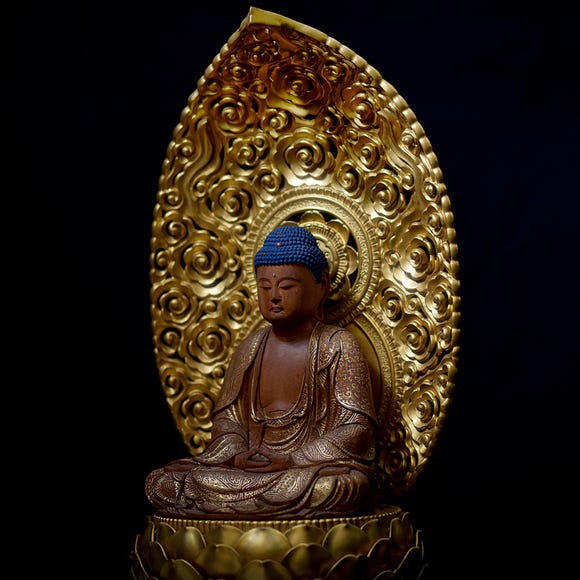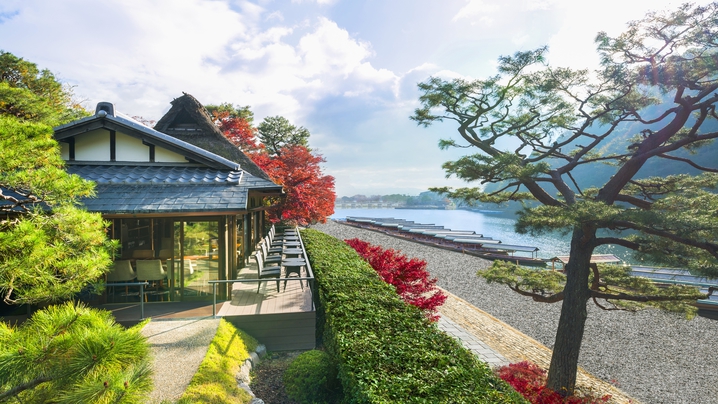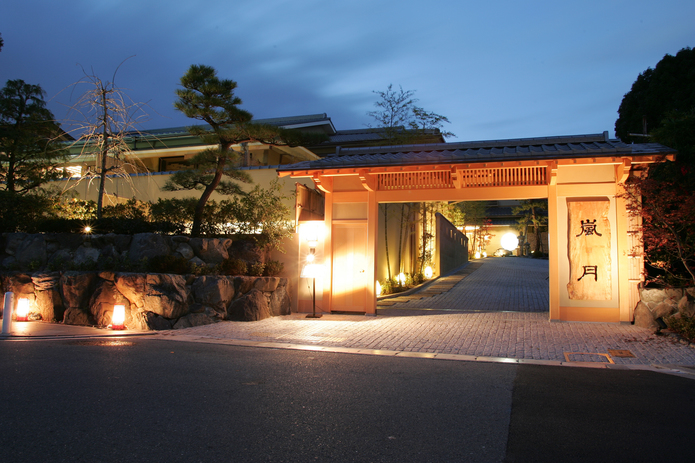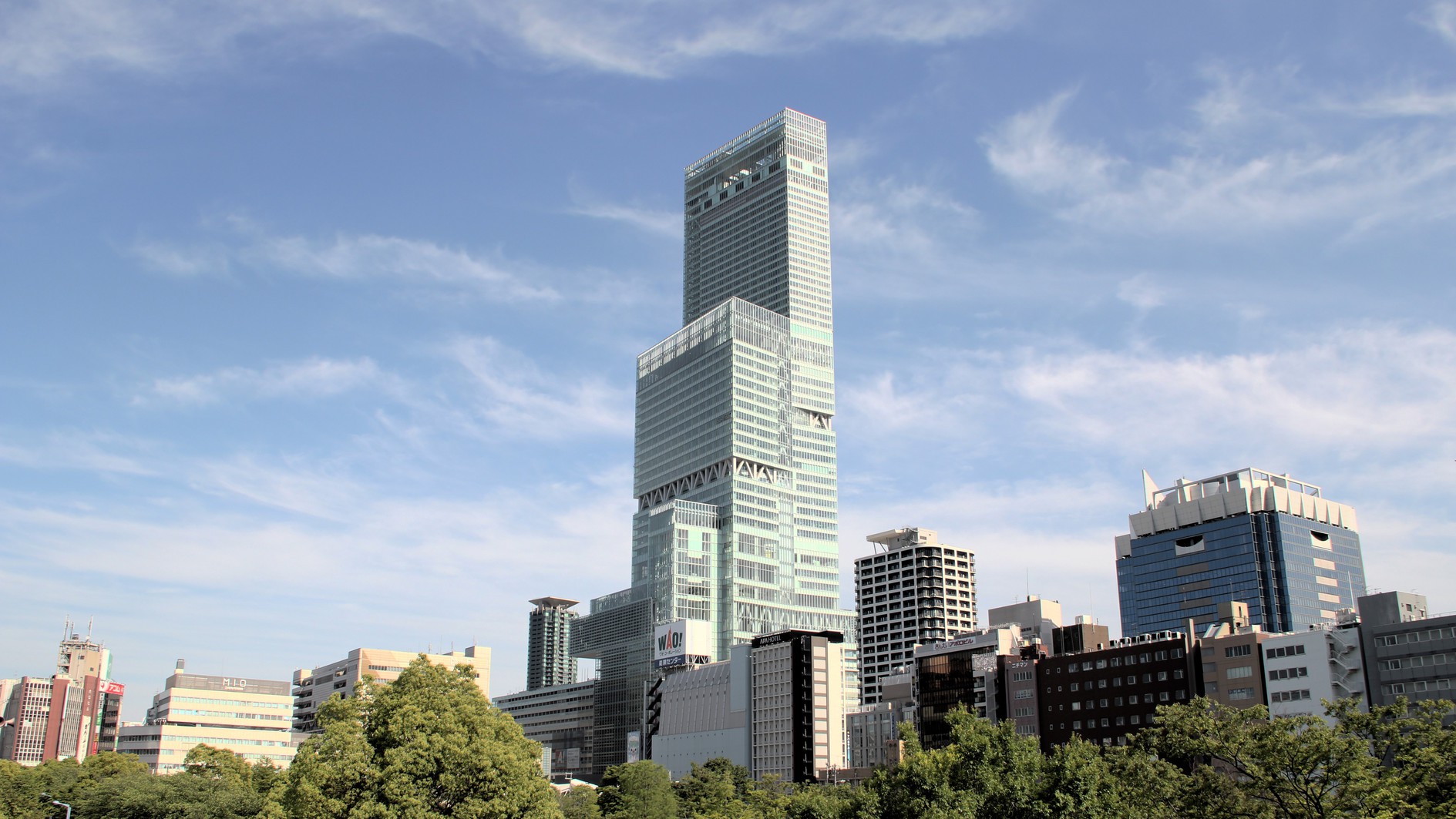
Osaka Castle is one of Japan’s most iconic landmarks, rich in history and a must-visit for any traveler. Said to have been built by Toyotomi Hideyoshi, the warlord who unified Japan, this stunning fortress stands at the heart of Osaka City, drawing scores of visitors each year. From its striking golden accents to the breathtaking views from the top, Osaka Castle offers a deep dive into Japan’s samurai past.
Whether you're here for history, scenic strolls, or panoramic city views, this guide will help you make the most of your visit!
Why Osaka Castle is a must-visit destination
If you're visiting Osaka for just a day or two, Osaka Castle is the perfect place to start. Conveniently located in the heart of the city and easily accessible by train or subway, this historic landmark offers a glimpse into Japan’s samurai past while being surrounded by stunning seasonal scenery.
In spring, Osaka Castle Park transforms into one of the city’s top cherry blossom viewing spots, with around 3,000 pink sakura trees creating a breathtaking backdrop. In 2025, Osaka Castle's cherry blossoms are expected to flower around March 31, reaching full bloom around April 6. View the official sakura forecast here.
In autumn, the golden hues of the castle’s exterior blend beautifully with the vibrant red and orange foliage, making it an equally mesmerizing sight. Gingko and other yellow leaves peak around the end of November, while Japanese maple and other red leaves peak in early December. View the official foliage forecast here.
How to Get to Osaka Castle
Nearest stations: JR Osakajokoen Station and JR Morinomiya Station. If using the subway, the closest stops would be Temmabashi Station or Tanimachi 4-chome Station. View directions from Osaka Station here.
Tickets & Admission Information
Entry to the Osaka Castle grounds is free. Admission for the Osaka Castle Museum is 600 yen for adults, and free for children 15 and younger. For details, see the official website here.
History of Osaka Castle
We joined a guided tour of Osaka Castle, led by Mr. Ichiman Masayuki from the Osaka Sightseeing Volunteer Guide Association.
The association offers several walking tours around Osaka Castle Park, each lasting between one and two hours.
For this tour, I selected the "Oteguchi Course," which takes us through notable sites such as Otemon, Tanzanoucho, Toyokuni Shrine, and more.
Said to have been built by Hideyoshi, but actually...
So exactly what kind of castle is Osaka Castle in the first place?

"Osaka Castle was originally built by Toyotomi Hideyoshi on the site of Ishiyama Honganji Temple," explains Mr. Ichiman. Interestingly, it was first written as "Osaka Castle" with a different character.
The castle tower was completed in 1585, and over the next 15 years, the surrounding area, including the outer regions and citadels, took shape. It was an immense and imposing fortress, a clear display of Hideyoshi's power.
However! The castle standing today is not the one Hideyoshi built. In fact, it was constructed by the Tokugawa Shogunate. The original Osaka Castle was destroyed in 1615 during the Siege of Osaka, a battle between the Tokugawa and Toyotomi clans.
After completely taking over the site, the Tokugawa rebuilt the castle in a different style, reinforcing their dominance over the region.

The current castle tower was built in 1626 during the era of Tokugawa Iemitsu. However, less than 40 years later, it was destroyed by a lightning strike.
For centuries, the castle remained without a tower. Then, in 1931, it was reconstructed based on an Important Cultural Heritage painting from the Toyotomi era, Osaka Natsu-no-Jinzu Byobu. The project was funded by donations from citizens, raising approximately 1.5 million yen (in the currency of that time).
This reconstruction is what we now know as Osaka Castle today.
The Mighty Stone Walls of Otemon
"The highlights of Osaka Castle are its massive stone walls and moat," says Mr. Ichiman.
While the castle tower was rebuilt in the Showa era, the stone walls and moat remain unchanged from the Tokugawa period. Constructed with carefully quarried stones brought from across Japan, the walls are an impressive sight, showcasing their immense scale and craftsmanship.

The first thing you'll notice at the entrance of Osaka Castle, *Otemon*, is the massive stone wall near the main gate.
From Osakajo Otemae Shibafu Hiroba (Osaka Lawn Square), you can see a striking difference in how the stones are arranged on either side of the outer moat. On the left, the stones appear stacked randomly, while on the right, they are arranged in a more orderly fashion.


Why is there such a difference?
"Both sides date back to the Tokugawa period, but the left side remains from the original construction, while the right side was built about seven to eight years later," explains Mr. Ichiman.
The construction of Osaka Castle took ten years, and during that time, stone wall-building techniques improved significantly. This advancement explains the difference in how the stones are stacked.
"Oh, I see!" I think to myself. He really knows a lot about the construction of stone walls.

Next up is Otemon! Here, I learned something fascinating.
On the right-side pillar, there's a uniquely shaped "joint" that stands out. It's believed to be a remnant from the repair of an old pillar during the Taisho era. Surprisingly, this type of joint is found nowhere else in Japan.
For years, its structure remained a mystery. Nobody could understand how it was put together—until 1979, when a newspaper revealed that a single carpenter in Kobe had managed to decipher it.
It almost feels like a puzzle left behind for future generations to solve. The restoration techniques of the Taisho era were truly intricate.

I learned one more fascinating detail about Otemon.
In front of the main gate stand two massive megaliths, famous landmarks of Osaka Castle. These stones, known as "Ote-mitsuke Ishi" and "Ote-niban Ishi," are the fourth and fifth largest stones in the entire castle.

Popularly known for bringing success in life: the Houkoku Shrine
Passing through the main gate, you'll come across a dry moat—a rare feature that has never held water since the castle's construction.
Osaka Castle sits on the northern edge of the Uemachi Daichi highlands, making it difficult to channel water into the moat.
Despite being dry, this spot offers stunning seasonal views. In spring, the cherry blossoms paint the landscape in soft pink, while in autumn, the fiery hues of the foliage create a breathtaking contrast against the moat.

Right across the moat stands the Castle Tower, but just before reaching it, I discovered a remarkable shrine—Houkoku Jinja, dedicated to Toyotomi Hideyoshi.
This shrine has been growing in popularity, especially among young visitors. Many come here to pray for success in their careers and relationships.
If you’re visiting Osaka Castle, why not take a moment to stop by and experience its unique charm?




On to the Osaka Castle Tower to See the Shachihoko and the Tiger
After passing through the Sakura Gate, the entrance to the inner citadel, you'll come across the largest stone in Osaka Castle—Takoshi.
Its sheer size is astonishing, with a surface area equivalent to 36 tatami mats. To put it in perspective, it's even wider than a typical one-bedroom apartment!

Heading back toward Sakura Gate, we finally arrive at Osaka Castle Tower. The sight is breathtaking—I couldn't help but exclaim, "Wow!"
At the rooftop, a golden Shachihoko gleams—a mythical creature with the head of a tiger and the body of a fish. Below it, a striking golden tiger is painted against the black walls.
This is truly the castle of Hideyoshi, the man who unified Japan. Its grandeur and bold design make a powerful statement.

"With the original stone walls from the Tokugawa period and a faithful reconstruction of the Toyotomi-era castle using the highest level of construction technology, this is the true form of Osaka Castle today," explains Mr. Ichiman.
Though the castle tower appears historic, its interior is made of concrete. Thanks to this modern construction, it has withstood the test of time, even surviving the Pacific War without burning down. There's a certain romance in seeing the Showa-era tower and Edo-period stone walls coexisting across centuries.
And with that, the guided tour comes to an end. Osaka Castle is filled with fascinating sights, and a guided tour adds even more depth to the experience. If you're interested, you can book a tour online up to 10 days in advance!
-
NPO Honjin Osaka Kanko Volunteer Guide CouncilNPO法人 大阪観光ボランティアガイド協会
- Address 3-11 Osakajo, Chuo-ku, Osaka-shi, Osaka-fu (inside Osaka Castle Park Center)
Closed: Dec 28~Jan 3
Guide Fee: Free
*May incur fees if applying via travel agency
090-3059-6923, 090-3493-9269 (10:00AM~3:30PM)
Things to Do at Osaka Castle
Overlooking All of Osaka: Up To the Osaka Castle Tower Observatory

Inside Osaka Castle, you'll find a museum showcasing its rich history (600 yen, tax included).
Start your visit by heading to the 8th-floor observatory, either by elevator or stairs. From the top, you can take in panoramic views of Osaka.
Then, make your way down floor by floor, exploring the exhibits in order—it's a fun and immersive way to experience the castle's history.

On a clear day, the view from the Castle Tower stretches far beyond Osaka. You can see Mount Ikoma and Mount Shigi in Nara Prefecture, as well as Mount Rokko in Hyogo Prefecture.
Looking south, you'll spot Abeno Harukas, Osaka’s tallest skyscraper. Just in front of it lies the historic battlefield where samurai warrior Sanada Yukimura made his stand during the Siege of Osaka.

Also worth noting is the haisuichi, or water distribution pond, stretching out to the east of the castle tower. This area marks the approximate location of the main tower from the Toyotomi era.
Nearby, remnants of stone walls from Toyotomi-era Osaka Castle have been discovered. Plans are underway to restore and eventually open them to the public.
It’s thrilling to think about how much history still lies buried here, waiting to be uncovered!

The Life of Hideyoshi and a Museum of Stories of Toyotomi Osaka Castle
On the 7th floor, you can explore the Karakuri Taikoki exhibit, which brings the life of Toyotomi Hideyoshi to life through detailed dioramas. It’s a fascinating way to learn about his journey and achievements.

On the 5th floor, you'll find the Miniature Natsu no Jin (Siege of Osaka) exhibition, a detailed figurine display based on the famous Osaka Natsu no Jinzu Byobu painting.
It vividly recreates the Battle of Tennoji, one of the most significant clashes of the Siege of Osaka. As you explore, see if you can spot Sanada Yukimura, the legendary samurai who fought bravely in this historic battle!



Passing through the 4th and 3rd floors, where the exhibits change periodically, we arrive at the 2nd floor.
Here, you can try on a replica Sengoku battle helmet at the Kabuto/Jinbaori Shichaku Taiken Corner (500 yen per try-on, tax included).
Hideyoshi's helmet is always a favorite, but in 2016, thanks to the popularity of the NHK period drama Sanada Maru, Yukimura's helmet took the top spot. Both are undeniably cool!



The Secret Spot Behind Osaka Castle
When you exit the castle tower, take a moment to visit the back of the castle. In the quiet shade, away from the crowds, stands a solemn stone monument.
This spot is believed to be where Hideyoshi’s second wife, Yodo, and their son, Hideyori, took their own lives. It is also said to be where Sanada Yukimura’s son, Daisuke, met his fate.

Further down the stairs you will see the Gokuraku Bridge on the north side of the castle tower. Looking up at the main tower from here is also a beautiful view. The peacefulness of the moats and the power of the stone walls here at Osaka Castle will be forever burned into my memory.
Have 20 minutes? Take the Osaka Castle Pleasure Boat cruise

From Osakajo Gozabune Pier, you can take a 20-minute boat tour through the inner moats of Osaka Castle. Operating daily from March to November (closed December through February), this ride offers a unique perspective of the castle’s towering stone walls and intricate engravings.
For 1,500 yen per adult (tax included), you can enjoy a relaxing journey, gazing up at Osaka Castle while taking in the seasonal scenery—from delicate cherry blossoms in spring to vibrant foliage in autumn. This attraction is covered under the Osaka e-Pass.

As you walk through Osaka City, you’ll often catch glimpses of Osaka Castle peeking out from between the buildings. But seeing it up close is a completely different experience.
Standing before its towering stone walls and expansive grounds, you truly grasp the scale and power of the castle. If you have the chance, take the time to explore its massive stone walls, deep moats, and the impressive castle tower—it’s an experience you won’t forget.
-

-
Address
1-1, Osakajo, Chuo-ku, Osaka-shi, Osaka, 540-0002
View Map -
Nearest Station
Osakajokoen Station (JR Osaka Loop Line)
- Phone Number 06-6941-3044
-
Address
1-1, Osakajo, Chuo-ku, Osaka-shi, Osaka, 540-0002
Osaka Castle Park & Surrounding Attractions
After exploring Osaka Castle itself, take time to wander through Osaka Castle Park. Spanning 105.6 hectares in the heart of the city, this expansive park is not only a beautiful place for a stroll but also home to several key historical and cultural landmarks.
MIRAIZA OSAKA-JO – A Western-style historic building transformed into a lively hub with restaurants, shops, and a rooftop terrace offering great views.
Nishinomaru Garden – A vast lawn garden with around 300 cherry trees, making it a prime hanami (cherry blossom viewing) spot in spring. The Main Tower provides a stunning backdrop, creating one of Osaka’s most picturesque scenes.
・Garden Hours: 9 AM–5 PM (Mar–Oct) / 9 AM–4:30 PM (Nov–Feb) (Last entry 30 min. before closing)
・Admission: Adults: 200 yen | Free for junior high school students and younger, Osaka residents 65+ (ID required), and individuals with a disability certificate. (Fees and hours may change during cherry blossom season.)
Gokurakubashi Bridge – A historically significant site where Hideyori Toyotomi and Yodo-dono tragically met their end.
Tamon-yagura Turret & Sengan-yagura Turret – Two Important Cultural Properties, these defensive towers once played crucial roles in the castle’s fortifications.
Sakuramon Gate – Named after the cherry trees that once lined its entrance, this Important Cultural Property is another key historical landmark.
The following popular 3 km sightseeing route allows visitors to explore the most notable spots around the castle.
- Tanimachi 4-chome Station (Start)
- Otemon Gate (Main entrance)
- MIRAIZA OSAKA-JO (Shops & dining)
- Main Tower of Osaka Castle (History & city views)
- Aoyamon Gate (Exit to the park)
- JO-TERRACE OSAKA (Shops, restaurants, and seasonal events)
- Osakajokoen Station (Finish, easy transit access)
Along the way, visitors can enjoy Osaka Castle Park’s seasonal beauty, including plum blossoms (January–March), cherry blossoms (March–April), azaleas (late spring), and vibrant autumn foliage (November). Whether you’re interested in history, scenic walks, or just a relaxing break in nature, this route offers a perfect balance of culture and sightseeing.
-

-
Address
Osakajo, Chuo-ku, Osaka-shi, Osaka, 540-0002
View Map -
Nearest Station
Osakajokoen Station (JR Osaka Loop Line)
- Phone Number 06-6755-4146
-
Address
Osakajo, Chuo-ku, Osaka-shi, Osaka, 540-0002
Text by: kurashisa
- Area
- Category
*Prices and options mentioned are subject to change.
*Unless stated otherwise, all prices include tax.
Popular Tours & Activitiess
Recommended places for you
-

Kanzenkoshitsuyakinikutabehodai Gyugyu Paradise Sannomiya
Yakiniku
Kobe, Sannomiya, Kitano
-

Jukuseiniku-to Namamottsuarera Nikubaru Italian Nikutaria Sannomiya
Izakaya
Kobe, Sannomiya, Kitano
-
Goods

Yoshida Gennojo-Roho Kyoto Buddhist Altars
Gift Shops
Nijo Castle, Kyoto Imperial Palace
-

ISHIDAYA Hanare
Yakiniku
Kobe, Sannomiya, Kitano
-

Kambei Sannomiyahonten
Yakiniku
Kobe, Sannomiya, Kitano
-

Todai-ji Temple
Temples
Nara, Ikoma, Tenri
-
Ad

Discover Timeless Beauty: Kimono-en, a Web Magazine Exploring the Spirit of Kimono
-

Everything You Need to Know About teamLab Biovortex Kyoto (2025 Insider Guide)
by: Wemmy Chau
-
Ad

Recharge and Relax with a Healing Getaway at Kamenoi Hotel Toba
-

History and Sustainable Brewing: World-Renowned Fukuju Sake at Kobe Shushinkan
by: WESTPLAN
-
Ad

Experiencing Manga as Culture, Not Just Reading It: Expo 2025 with Rumiko Takahashi
-

Curious About Sake? I Visited a Sake Brewery in Japan and Here's What I Learned
Inspiration for Accommodations
-

Spacious Family Hotel in Namba: 20 Comfortable Stays for Family Fun
-

Charming Hotels to Enjoy the Spectacular Views of Arashiyama's Autumn Leaves from Your Room
-

Experience Stunning Views of Osaka Castle from Private Spaces: Top Hotels Near Osaka Castle
-

Recommended by Visitors! Arashiyama's Best-Rated Hotels
-

Family-Friendly Universal Studios Japan Hotel with Excellent Access
-

Enjoy a Comfortable Stay in Osaka! 10 Hotels with Convenient Airport Shuttle Services
-

Top 10 Recommended Hotels Near Namba Station with Great Access
-

Enjoy Night Views from Your Room! Recommended Hotels in Namba Area
-

Fine Japanese Dining in Kyoto! Top 3 Japanese Restaurants in Kiyamachi and Pontocho Geisha Districts
-

Osaka Koreatown: In Search of the Best Eats in the Korean Roots of Osaka's Tsuruhashi Market
-

Inside Kyoto's Spectacular Sanjusangen-do Temple with 1,000 Gold Statues
-

Complete Guide to Buying Japanese Medicine in Japan: Phrases and Vocabulary You Need to Know
-

Sightseeing Highlights: Experience the Appeal of Kyoto Geisha Culture
-

Explore Autumn in Hyogo Prefecture: Two-Day Road Trip to See Stunning Foliage and Top Attractions
by: Hide
- #best gourmet Osaka
- #things to do Osaka
- #what to do in kyoto
- #what to bring to japan
- #best gourmet Kyoto
- #new years in Osaka
- #what to buy in nanba
- #Visiting Osaka
- #onsen tattoo friendly arima
- #daiso
- #Visiting Kyoto
- #best japanese soft drinks
- #japanese fashion culture
- #japanese convenience store snacks
- #japanese nail trends




















